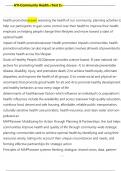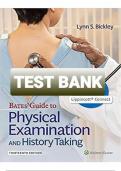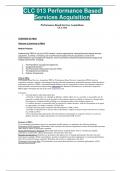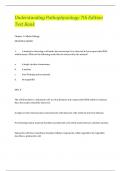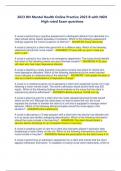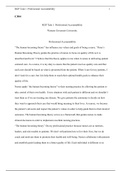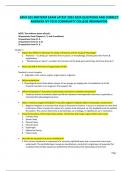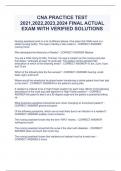Exam (elaborations)
ATI-Community Health <Test 2> 1 / 11 health promotionanswer assessing the health of our community, planning activities to help our participants to gain some control over their health to improve their health; emphasis on helping people change their l
- Module
- Institution
ATI-Community Health <Test 2> 1 / 11 health promotionanswer assessing the health of our community, planning activities to help our participants to gain some control over their health to improve their health; emphasis on helping people change their lifestyles and move toward a state of op...
[Show more]
